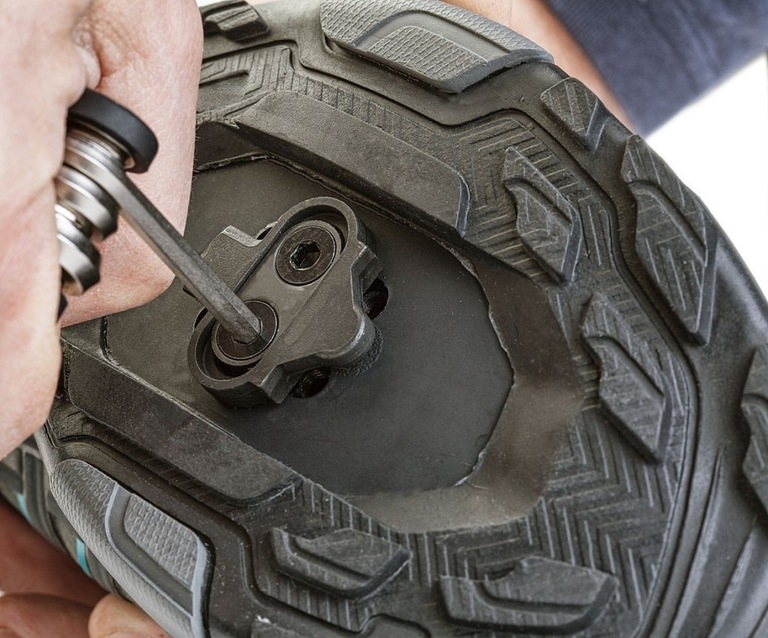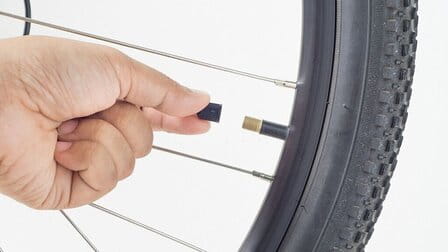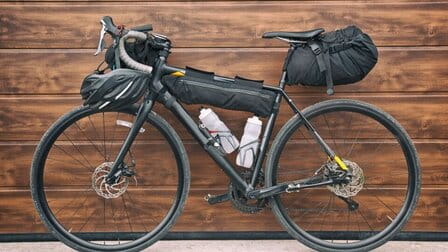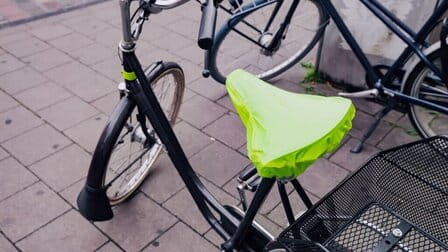Cycling shoes are essential equipment for any cyclist's journey. There are numerous crucial factors to consider when buying new cycling shoes, such as the pedal, cleats, laces,…
Your pedalling power will be substantially affected by the material and footpads. For comfort, shoelaces and drainage are essential. If your shoes aren't snug, you won't be able to pull them before pressing the pedal. Another consideration is if the cleats (can) are compatible with your pedals.
In this article, we will show you the benefits of cycling cleats that every cyclist needs to know!
1. What are Cycling Cleats?

Cycling shoes have a stricter sole than regular shoes. This firm aids the biker in pedalling more efficiently and powerfully with less effort. A metal device known as a Cleat is attached to the sole of this cycling shoe. A cleat is essentially a device that attaches your shoe's sole to the pedals. These shoes require clipless pedals, which are specifically built for them.
The Clipless Pedal has a two-part system: a small pedal with a locking mechanism and a shim that attaches to the underside of your shoe called a 'Can' or 'Cleat'. These cleats will lock your shoes to the pedals and give you a secure connection while cycling.
The pedals and the cleats are the main components of bicycle shoes. Because shoes and cleats are frequently supplied separately, and how they fit into the pedals varies depending on the indoor cycling cycles in your class, let's take a closer look at each component and see how they all fit together.
There are many shoe cleats on the market, but the two most popular ones are Shimano and Look. Still, there is one thing you need to remember: the pedals and cleats should come from the same brand. For example, you should use Shimano cleats if you are using Shimano pedals. If the pedals are Look brand, the cleat is also Look brand.
2. Type of Cycling Cleats

There are a variety of cleats and pedals available in the market. But in general, cycling cleats has 2 types below:
- 2-bolt pattern: The two-bolt, which is excellent for mountain bikers, off-road riding, commuting, and touring. The two-bolt system has clip-in mechanisms on both sides of the pedal, making it easier to clip in. Because they are recessed into the shoe's tread, these cleats are simpler to move around when off the bike because they are a little smaller.
- 3-bolt pattern: Road cycling is the primary application for the three-bolt system. The cyclist is given a larger, more stable pedal platform for this cycling style, which can be beneficial depending on the terrain the biker will be travelling. These bolts only attach to one side of the pedal, so ensure it's put correctly before clipping it in. The contact area between the cleat and the pedal is greater with three bolts, which improves power transfer from your shoe and improves performance.
It is dependent on the type of cycling you do that you can choose the suitable one (commuting, racing, mountain biking, touring, etc.). For example, double-sided Shimano SPDs are a secure bet for mountain cyclists. The compact, light platforms are easy to clip in and out of, and the recessed cleats allow you to walk comfortably. The traditional flat side works with ordinary shoes for short travels, while the other side works with cleats. Three-bolt Shimano SPD offers a larger contact area on the pedal, which is more pleasant on foot for long rides in racing, audax, or club runs.
3. Benefits of Cycling Cleats
You'll need to install cleats to your new cycling shoes to connect them to the pedals. Cleats come in a range of forms and designs and are often offered separately from bicycle shoes. Below, you'll find additional information about the benefits of cycling cleats.
Optimum Power Delivery

Cleats provide optimal power delivery since they absorb inputs from your foot both when pushing and pulling your legs. By delivering pedal force throughout the pedal stroke, cleats allow you to activate more muscles. At the end of the day, your body consumes roughly the same amount of overall energy - cleats simply mean that different muscular groups share the load, which is a benefit.
When you initially begin wearing cleats, you will notice a difference when you become weary. At that time, you're trapped, and you can't move for your own safety. Almost everyone who wears cleats immediately grows to enjoy them and notices a difference in averages. Your pedalling stroke becomes more consistent. You begin to change the way you cycle (stroking back and pushing down), resulting in increased efficiency.
Moreover, the flat pedals can help you accomplish this efficiency. Cleats appear to make it happen more naturally. You notice that you may pull the pedal back, which works the muscles differently.
Decrease pressure on the foot
Cycling forces are generated by the hip, knee, and ankle joints. In seated cycling, the ankle generates around 20% of the overall force in the lower leg. Because the foot is in close touch with the drive-train, each pedal stroke puts tremendous pressure and weight on foot.
However, the use of cleats in cycling shoes is widespread. The key benefit is that it allows the shoe to stay in closer contact with the pedal during the recovery period, resulting in a more efficient pedal stroke.
Since your feet are firmly attached to the bike, it's easier for you to control your bike and maneuver the frame sideways to avoid hazards. In addition, because you can stay firmly on the pedals, you can also make "bunny-hop" jumps avoiding small obstacles.
Another case is if you are using a traditional pedal and your car tripped over a pothole or got caught in a big rock; this will cause you to slide out of the saddle and rush forward, followed by a wet landing all over your body. Conversely, clipless pedals and cleats will keep your feet firmly attached to the bike, even when your butt is out of the saddle, you still have a safe landing.
Advance SPD Mechanism

Cleats are very useful when cycling up to the hill. The SPD system keeps you firmly planted on your pedals while delivering optimum power.
They're built for long road climbs, high-power sprints, and quick cadences, and they're a little more challenging to get used to. They're a little stiffer to get in and out of than mountain bike pedals, but most pedals have adjustable tension, so you can raise it as your confidence grows.
Road cyclists are more likely to use 3-bolt cleats. The big cleat allows for a better connection with the pedal and higher power transfer when used with stiff-soled shoes. However, because the pedals are frequently single-sided, it's more challenging to master. There's an extra knack to getting the pedal the right way up. Your feet are also held in a more firm posture since the pedals have less float. Suppose your riding position isn't set up correctly. In that case, this can lead to discomfort and potentially other ailments, and they're also more challenging to walk in.
Faster Speed
Cleats are faster because they generate a lot of friction on the shoe's surface, allowing the cyclist to propel themselves with greater power. As a result, increased speed means that cyclists use more muscle with shoe-surface friction. They're usually more lightweight and have a superior grip.
Because they all deliver the same amount of force to the crank, using a cleat instead of a pedal affects efficiency. Cleats allow you to not only push down (like pedals) but also pull up, push forward and back, and so on. As a result, you'll be able to use more force. Switching to cleats will provide minimal benefit until you build up your muscles.
Conclusion
When cycling, you need to keep your foot because it provides maximum energy transfer between your legs and the bike's transmission. Clipless pedals and cleats will hold your feet during the ride and take your cycling to the next level. Above is all information about the benefits of cycling cleats that cyclists should know. Hope you will find the most suitable cleats for your cycling journey.













